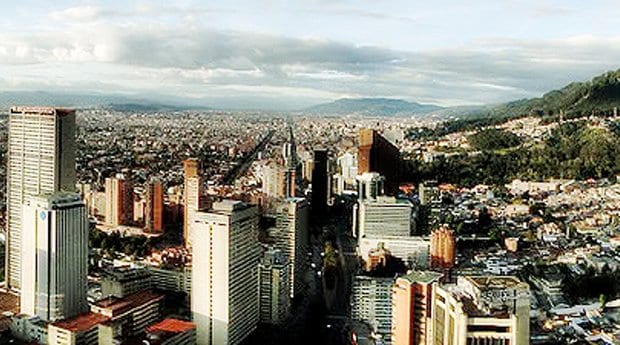
View of Bogotá’s downtown city centre. Credit: Antonio ca2
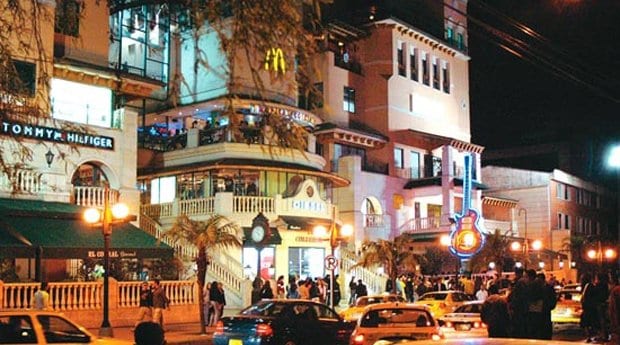
Many of the North American trappings, from McDonald’s to chain retail outlets, can be found at Atlantis Plaza. Credit: Jumamuba
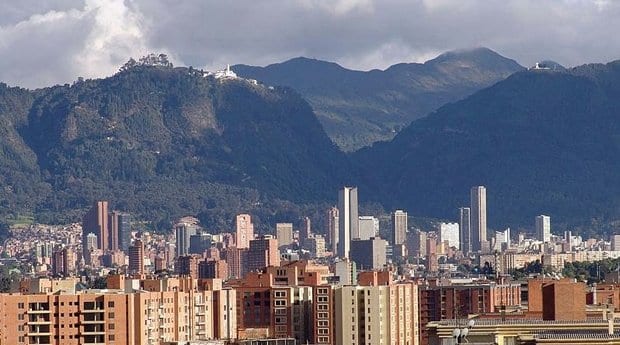
Bogotá’s city skyline set against dramatic, picturesque mountains. Credit: Matthew_Riche
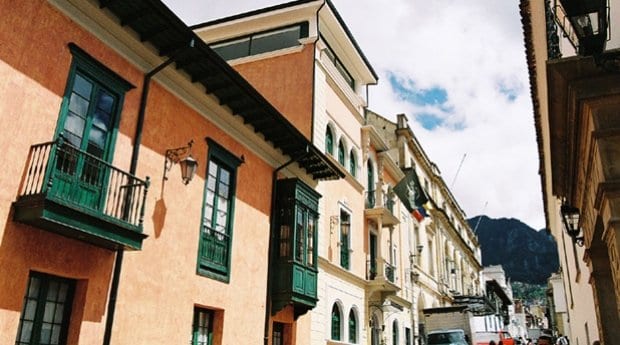
The historic district. Credit: william.neuheisel
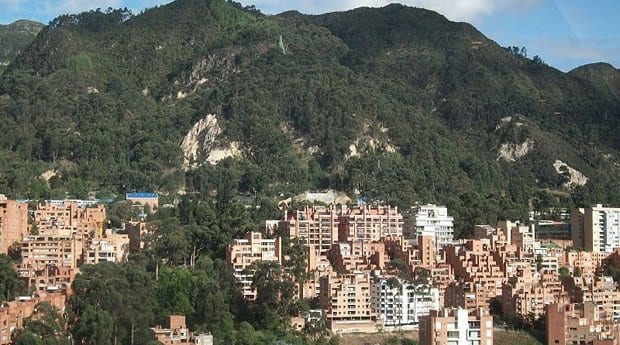
Oriental Hills in Bogotá. Credit: Pedro Felipeputisputis
Credit: Pedro Felipeputisputis
Within an hour’s flight of Caribbean resorts, Amazonian jungle lodges and the verdant green mountains of Colombia’s zona cafetería, Bogotá is an ideal jumping-off point to explore a country bursting with natural beauty. The capital city of nine million boasts one of Latin America’s most diverse and accessible gay nightlife scenes, and the friendly people set Bogotá apart as a destination.
Cerro de Monserrate, a dramatic and lushly forested mountain, lies at the heart of the city. While Bogotá has more than 3,000 neighbourhoods, most of the city’s accommodations, nightlife and cultural offerings are situated alongside the mountain in a line from north to south that is well served by the city’s clean and modern public transit system.
At the southern end lies La Candelaria, an atmospheric colonial neighbourhood where affordable accommodation and eating options are within walking distance of the major plazas, cathedrals and museums. Bogotá was founded in 1538, but its well-preserved colonial and neo-classical edifices are now alive with modern offices and shops. Modern architecture buffs will enjoy the red brick and curving, natural designs of Rogelio Salmona, whose influence can be spotted alongside more traditional styles.
El Banco de la República Museo in La Candelaria showcases Colombia’s richest collection of arts in 10 galleries that are free to visit and open late. Of note in the Colonial section is a bizarre room dedicated to portraits of deceased nuns and one gigantic photograph of a floating Marina Abramovic. El Banco also houses the Botero museum, which holds 83 pieces from Fernando Botero’s private collection and 123 pieces done by Colombia’s most famous artist himself. Botero paints humorously engorged portraits, nudes and still-life scenes that never fail to win over casual visitors and art lovers alike.
In the early afternoon, a number of restaurants on the eastern side of Plaza Bolivar open up to serve a filling three-course almuerzo for less than $5 Canadian. El Artista bustles with a savvy lunch crowd and is a great place to try Colombian specialties like the astonishingly meaty bandeja paisa, a combination of fried beef, sausage, chicharron, avocado and fried egg on a bed of beans and rice.
As you move north of La Candelaria, you enter La Macarena, a neighbourhood in transformation that has been profiled by The New York Times. Both the gastronomic heart of the capital and a chic residential district where you can spy eclectic art collections through windows, La Macarena can be explored on foot by strolling between Carreras 4 and 5 between Calle 26 and 30. A perfect example of the whimsical entrepreneurialism that has taken root in the neighbourhood, Arepa & Taco (Calle 4ª 27–03) serves margaritas and creative versions of the Colombian street food staple in a colourful and kitschy environment.
One of the few neighbourhoods in Latin America to be prefaced as gay, Chapinero lies a short cab ride north of La Macarena. Since Bogotá’s bars are supposed to close at two in the morning, they become lively earlier than expected. Simply walk along Carrera 9 between Calles 58 and 60 after 9:30pm to explore the tightly packed nightlife district.
A good place to start is Color House Café Bar (Cra 9ª# 60–74), where the music ranges from Beyoncé at the Super Bowl to classic Cher. Here you can share a good bottle of Colombian rum with lime and coke for less than $20. From there, the options could fill several weekends. If you are drawn to big clubs with big sounds, then nothing will do but Theatron (Ca 58#10–34), a converted movie theatre that now houses 10 different nightclubs (one is women-only), with music ranging from reggaetón to techno. If you want the opposite, check out Indie Cave Music Bar (Cra 9#59–06), which packs very friendly, stylish 20-somethings into a bar the size of a king-size mattress. For something totally different, head to El Perro y la Calandria (Cra 9 # 59–22), where locals pack two floors, drinking heavily and singing along to romantic Spanish ballads. If you want to sleep near the nightlife, Chapinero has few accommodation options beyond the by-the-hour variety, although the High Park Hotel (Cra 4 # 58–58) is gay-friendly and comes well reviewed.
To experience a truly local gay scene outside Chapinero, there is Traffic Light (Ca 21 #6–43), a dive bar with just a traffic light hanging above the door where you might find young guys dancing salsa together, and the nearby La Oficina.com (Ca 22 #8–39), a place to hear local music with a mature crowd. For the adventurous, there is Dark Club (Ca 64 # 13–35, 2nd floor), a sex club where nudity is the dress code and nothing is forbidden.
If you want to relax after the hedonism of Chapinero, upscale hotel accommodation can be found in the Zona Norte, starting around Calle 72 and ending in the 100s. If you want to avoid the nosy concierge, Oasis Collections rents handpicked apartments and studios. You will find most of Europe’s high-end designer stores in Zona Norte’s fashionable malls, as well as a few fashion-forward brands, like Spain’s Pull & Bear. Stylish shoes, clothes and accessories can be bought at the independent BackstageCorp (Cra 7 No. 4a–48) boutique.
The best way to see all of Bogotá’s neighbourhoods is by bike on Sundays, when more than 100 blocks, from La Candelara to Calle 125, are closed for cyclists. The route is lined with vendors selling fresh fruit juices and Bogotans burning off the excesses of the weekend.
Additional resources
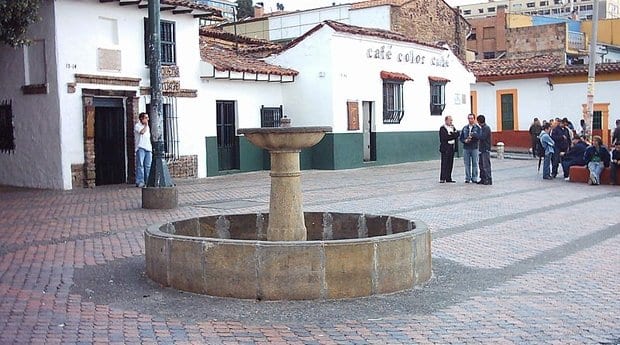
 Why you can trust Xtra
Why you can trust Xtra